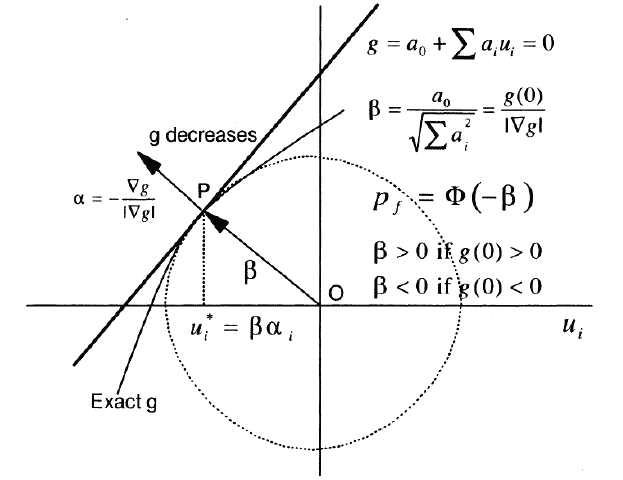NESSUS First-Order Reliability Method [1]
First-Order Reliability Method (FORM) searches for the Most Probable Point (MPP) and then computes the reliability based on an approximation to the limit state at this point. Unlike the MV or AMV+ methods FORM actually operates in transformed standard normal u-space. FORM works with trying to approximate the g-function by simple linear function. FORM generally computes probability in less than 200 model evaluations for 8 design variables. This method should not be used with discrete design variables or discrete response variables. Multiple local MPPs may induce error in the probability estimation by this method and that error tends to be most pronounced for large probabilities of failure.
The FORM probability solution is based on the linearization of the g-function at the MPP in the u-space. The first-order polynomial g1(u), is:

Given g1(u), the probability of failure is a function of the minimum distance to the plane defined by g1 in the u-space:

where  is computed from
is computed from

which is allowed to take negative values. A negative  means the origin is in the failure region (i.e., for the case of pf > 0.5). The following figure shows FORM results and all details:
means the origin is in the failure region (i.e., for the case of pf > 0.5). The following figure shows FORM results and all details:

Control Parameters
| Name | Default Value | Description |
|---|---|---|
| Finite Difference Step Size | 0.01 | This option is used to calculate finite difference step size. The method operates in transformed standard normal space. The step sizes are determined based on the square root of this option multiplied by mean value of the design variable. The step size is used by the underlying optimizer trying to locate the MPP. The option expects a value typically within 0 and 1. |
References:1. NESSUS Theoretical Manual, February 17, 2012, Section 3